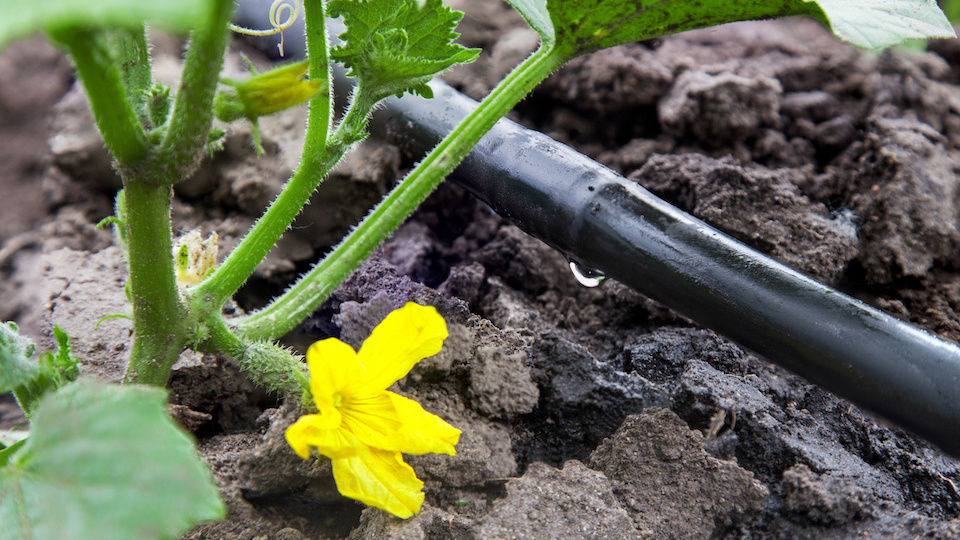As the summer season heats up, gardeners sometimes struggle to keep plants healthy and producing. To make matters worse, water restrictions often follow periods of drought and heat, causing gardens to suffer further. If you happen to live in an area, like me, that is particularly hot and dry all summer long; these water-saving gardening techniques are for you.
Use olla irrigation
This is perhaps a word that you have never heard of; however, it is one of the most efficient ways to irrigate gardens and is used worldwide. The method is so easy that anyone can do it. When you plant, you bury an olla (an unglazed ceramic jar near the roots of plants. Once the jar is set up, fill it with water, and it will leach into the soil directly to where it is needed. Using this method results in less water loss due to evaporation.
Note: A similar method can be used to keep container plants well-watered and uses a smaller vessel and bottle.
There are many creative ways to keep plants hydrated during the long and hot summer months. Here are a few of my favorites.
Use a cloche
You may be familiar with using a cloche to protect plants from external weather events like cold temperatures. However, it can also be employed to conserve water. Cloches come in all shapes and sizes, with the most common being a glass bell jar. In a similar fashion to the olla, a cloche helps to reduce the amount of water that escapes via evaporation. To use, simply place the jar on top of the plant. To save money, use recycled milk or water jugs. For the best results, the cloche must be airtight.
Use dehumidifier water
This one is not for my friends in the southwest but for all those in humid areas of the country! Use a humidifier indoors to reduce the amount of moisture in the air, but don’t dump that collected water out. Use it instead as a supplement to regular watering to keep your garden plants happy.
Re-use kitchen water
When you clean fruits and veggies, use a basin to collect this water and give thirsty garden plants a drink. In the same manner, you can also reuse cooking water that is used for pasta, potatoes and to boil eggs. The only caveat here is that you must allow time for the water to cool before using it in your garden.
Try xeriscaping
If you are just beginning your garden or doing a makeover, consider xeriscaping, a method that makes use of drought-tolerant plants. This type of gardening began in the 1980s as a response to prolonged droughts in the western parts of the country. This method is useful anywhere where a low-maintenance, water-conserving landscape is desired. Xeriscaped landscapes often use small patches of turf for particular purposes such as play, pets, and lounging – as opposed to huge sections of water-hogging lawn grass. These types of gardens often use native plants that are well suited to weather conditions and a lot of mulch for water retention.
Plant in blocks
The traditional method of gardening is to plant in rows. However, when designing a garden layout, try planting in blocks (squares) instead. A block system is an incredibly efficient way to save water because there is less chance of it getting lost through ground runoffs. As an added bonus, the block method produces a higher yield than conventional row gardens.
Use a rain barrel
Rain barrels are one of the best ways to take advantage of the free water that falls from the sky. These barrels allow gardeners to collect and store rainwater during the wet season for use in the dry season. There are numerous types of rain barrels to choose from, and you can even create your own barrel using food-grade drums. Keep in mind that rain barrels need to have a protective cover on top to prevent insects such as mosquitoes and debris from entering the tank. A faucet system is also a good idea and makes it easy to extract collected water.
Create a drip irrigation system
A drip irrigation system is one of the easiest and most efficient ways to keep a garden well-hydrated. The ground under a drip system stays moist but not saturated and provides just the right amount of water for plants to thrive with very little waste. By setting a low flow rate and using a timer to water only in the coolest times of the day – drip irrigation systems are the perfect solution to keeping a garden thriving during hot and dry conditions.
If you find yourself wondering how to protect your plants from hot and dry weather and water restrictions, consider some of the ideas above! Your plants will thank you.
Happy Growing,
-Susan Patterson, CBHC and Master Gardener




